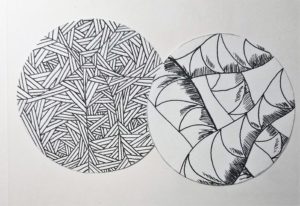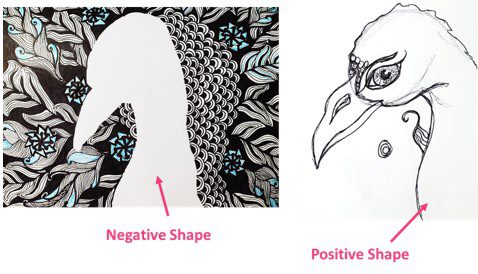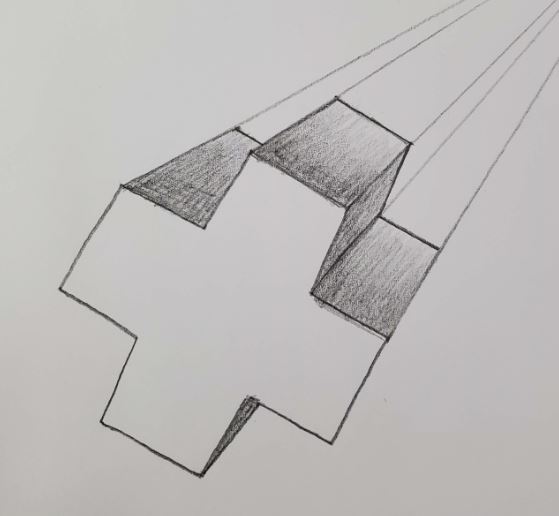What Are the 7 Elements of Art
What are the 7 elements of art, and why do we need them?
We will get into what they are in a few minutes. But first, let’s take a look at why you need them. The most obvious answer is, to create art. It’s impossible to create any work of art without using at least a few of the elements of art. They are the building blocks of art creation.
Although it isn’t necessary to master all of the elements of art in order to start creating artwork, it will help you immensely. The more you understand each of them individually, the more you’re skills will improve. And if you can master combining different elements, you’ll really start to see improvements in your artwork.
So if you’re a hobby artist it will still be well worth your time and effort to learn each of the 7 elements of art.
So what are the 7 elements of art?

Elements of Art Definition
Let’s start by looking at the actual definition of the elements of art. Wikipedia describes them as the, “stylistic features that are included within an art piece to help the artist communicate”.
This specific definition is very academic and describes the higher level learning of art. Most likely for the purpose of becoming a professional artist. Although you may not be striving to be a professional artist, or to even “communicate” through your artwork, you will still benefit greatly by understanding the elements of art.
Start Your Art Journey Today
What Are The 7 Elements of Art
- Line
- Shape
- Color
- Value
- Texture
- Form
- Space
By using these elements, the artist can create a more powerful work of art. We are able to create works that conveys meaning and emotion. Without the use of the elements of art, a work of art will be boring and unorganized. It is impossible to create a work of art without using at least one of these elements.
Knowing the elements of art, and understanding how they are used, will help you understand and analyze existing works of art. Going to the art museum will be more rewarding and looking at famous works of art will make more sense.
* Some of the links in this post may be affiliate links. This means I receive small commissions for purchases made through these links at no extra cost to you.
If you’re teaching younger students about the elements of art, How to Teach Art to Children has several good lessons ideas in it.
Elements of Art – Line
Line is the most used element of art and is the foundation of all drawings. A line may be diagonal, vertical, horizontal, thin or thick. Also, lines can be parallel, curved, broken, straight or zig-zagged.
A line isn’t just a line. It can be used in your artwork to show movement or convey emotion. You can use line for shading or to add texture. We also use line to move the viewer’s eye through a work of art. There are so many ways we use line in our artwork, I can’t possibly think of them all. I know I’ve missed at least a few.
Learn more in our Line for Hobby Artists tutorial.
An entire work of art can be created with line alone. Below are a couple of Zentangles that I made with only the use of line. Zentangles are a fun and relaxing form of art, hence the “Zen” in Zentangle.

If you’ve never explored the art of Zentangle, do yourself a favor and look into it. You won’t regret it. Especially if you’re intimidated by creating art.
You can get started by taking a look at, Art & Relaxation with Zentangle Art. I highly recommend this pack as a good starting point.
Elements of Art – Shape
To be a shape, you have to have a line that connects at the beginning and at the end. The lines that create a shape can be straight or can be curved. Any closed line is a shape. A shape can be positive or negative. It can be realistic or abstract.

Shape can be decorative like a paisley, or symbolic like a cross. It can be organic, such as the shapes we see in nature that are soft and fluid. Or they can be geometric, which tend to be sharp and rigid.
In art, there are many different types and uses for shape. We can even use shape as a foundation for more advanced drawings like we discuss in How to Use Shapes to Draw.
Color
Color is seen when light is reflected back to your eye from an object. There are three properties of color. They are hue, intensity, and value.
- Hue – the name given to the color (red, blue, yellow, green, etc.)
- Intensity – the amount of saturation a color has
- Value – how light or dark a color is. This refers to tint (adding white) and shade (adding black)
We can use color to show moods and emotions, such as Picasso’s blue period when he was in a deep depression. In his paintings this sadness was conveyed through the use of the color blue.
With the use of color, we can show harmony in our artwork. Or maybe you want to use it to show a lack of harmony. We often use color to show contrast so we can make different areas of a work stand out against each other.
We categorize colors in many different ways. Colors can be primary, secondary, or tertiary. There are three primary colors from which all other colors are made. The three primary colors are red, blue, and yellow. Secondary and tertiary colors are created through the mixing of the three primary colors.
Color Theory teaches us how to use various color schemes in our artwork to create harmony.
There are also various ways to group colors. Some colors are considered warm (yellow, orange, and red). And some colors are considered cool (blue, green, and purple). Colors can also be complimentary or analogous. A color wheel is used to show this relationship between colors.
You can learn how to make your own color wheel here, How to Make a Color Wheel for Beginners.
Elements of Art – Value
Value is how we use light and dark in our artwork. It can be shading from a pencil, or by mixing white or black to a color.
Value is used to create form, when creating the illusion of a third dimension in a two-dimensional drawing. We also use value to show contrast by using lights and darks next to each other in our art. With the proper use of value, we can also make our drawings look more interesting and realistic. We use value in art to show depth and distance. Value scales are what we use to show the range of tones from white to black for a given medium.
Line can also be used to show value through the use of hatching and cross-hatching. Or we can use dots in the form of stippling to show value by increasing or reducing the amount of dots we are using and how much space is between them.
The drawings below are similar to each other in that they are both checkerboard type designs. Yet, one is much darker than the other. I used value to show contrast between the two drawings.

For a lesson on adding value with shading, check out How to Draw a Ribbon Name. Or, How to Draw a Value Scale.
Texture
Texture refers to the way an object looks or feels. When creating art, we are working with perceived texture, not actual texture (unless working with a three-dimensional object such as clay). When creating a drawing, or painting, you may want it to look rough or smooth.
There are many techniques we can use to create the illusion of texture in our artwork. Several painters have found ways to incorporate actual texture in there works of art as well. Anselm Kiefer used straw and ashes, among other things, in many of his paintings. While art museums prohibit the touching of artwork, the textures are visually perceived.
You can easily learn how to create your own texture in your drawings and other types of artwork. Check out our lesson on How to Create Texture in Art to help you get started.

Elements of Art – Form
When a shape is made three-dimensional, it becomes a form. Such as a sculpture. Also, it could be perceived in a two-dimensional work of art using shading and perspective. Spheres, cones, cubes, cylinders, and pyramids are all forms. When looking at a two-dimensional shape, you can only see one side and it appears flat. While a three-dimensional form has the appearance of taking up space and you can see multiple sides.
Creating a drawing using one-point or two-point perspective is an example of the use of form on a two-dimensional surface. These are the techniques used to give the illusion of space in a two-dimensional world.
Form is also the actual three-dimensional works of art made with clay, metal, wood, and architecture. Most people don’t even realize that architecture is a form of art. Frank Lloyd Wright has designed over 1,000 structures that are absolutely amazing works of art.
We are fortunate enough in the Toledo area to have a Frank Gehry design next to the Art Museum which houses the University of Toledo art classes. This is a beautiful building that is interesting just to look at, with it’s fractured composition and various levels.
For an art lesson of form, check out How to Draw Robots Using Forms.

Space
The use of space can make a flat image look like it has form. This can be done through the use of perspective, size, or overlapping. When talking about the foreground, middle ground, and background, we are referring to space. Space is how we show depth or distance.

Here are some easy beginner art tutorials on using one point perspective in art.
Space can be positive, which is the area that is filled with content. Or space can be negative, which is the area around and between the content.
The 7 Elements of Art
In conclusion, the elements of art serve as the building blocks of visual expression, allowing artists to communicate their ideas, emotions, and experiences in a captivating and impactful manner.
Through the careful manipulation of line, shape, form, color, value, texture, and space, artists can create powerful compositions that resonate with viewers on a profound level. Whether it’s the bold strokes of a brush or the meticulous arrangement of shapes, each element contributes to the dynamic interplay that breathes life into artworks.
When we get to know these elements, we unlock the secret language of art and learn to appreciate the magic that artists bring to the table. So let’s keep on exploring, celebrating, and embracing these elements, because they’re not just doodads on a canvas – they’re the keys to a world where imagination knows no bounds and visuals take your breath away.


